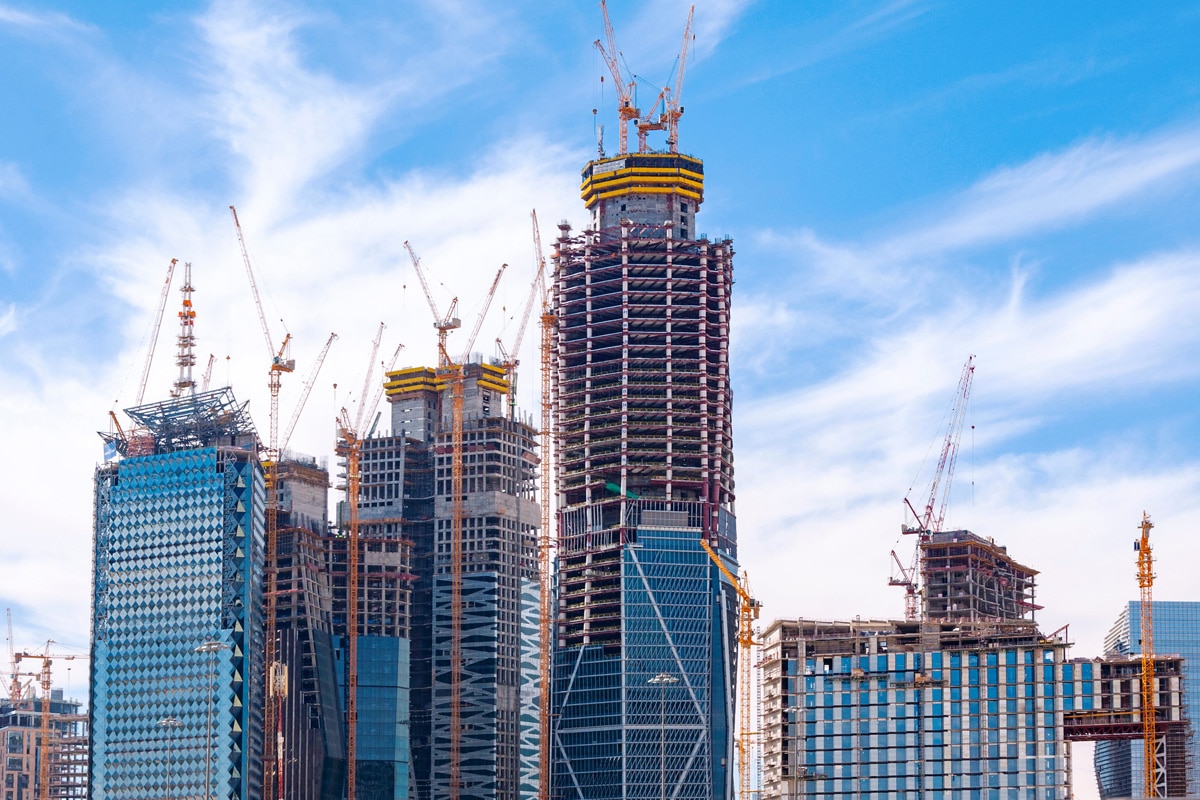As the Saudi real estate market matures, the total amount of office space in Riyadh is expected to grow by 1 million square metres to 6.3 million square metres by the end of 2026, according to global property consultancy, Knight Frank’s Autumn 2024 Saudi Arabia Commercial Market Review.
“Program HQ” is contributing to increased demand for office space in Riyadh, further influencing office lease rates.
517 companies have now committed to establishing their regional headquarters in the Kingdom, well ahead of the 2030 target of 480, says Knight Frank.
Riyadh office space
As a result, Riyadh has recorded the highest national increase in Grade A office lease rates over the past 12 months at 31 per cent to around SR2,604 ($694) per square metre, followed by 2.9 per cent in Jeddah and by 2.2 per cent in the Dammam Metropolitan Area (DMA), according to Knight Frank.
Faisal Durrani, Partner – Head of Research, MENA, said: “Vision 2030 is reshaping Saudi Arabia’s economy and society, with a central focus on transforming Riyadh into a key regional and global centre for business, finance, leisure, and tourism.
“Indeed, 49 per cent of the new jobs created in the Kingdom over the last five years has been in Riyadh, which is adding to the upward pressure on office rents, with many key office districts and business parks fully leased, with waiting lists.
“The limited availability of office space is also forcing up Riyadh’s Grade B rents, which have climbed by 27 per cent over the past year. Similarly, in the DMA region, Grade A rents have climbed by 2.2 per cent since Q3 2023, fuelled mainly by strong demand from the public sector”.
Knight Frank’s analysis shows that Jeddah’s office market saw steady growth over the 12 months leading up to the end of Q3 2024, driven by rising office demand, reports Knight Frank.
This demand has impacted rents, with Grade A office rents increasing by 2.9 per cent to SR1,235 ($329) per square metre, while Grade B rents rose even faster, up by 3.8 per cent to SR810 ($216) per square metre from Q3 2023 to Q3 2024.
Occupancy in Grade A offices decreased slightly by 1 percentage point over this period, reaching 94 per cent. In contrast, occupancy for Grade B spaces grew by 2 percentage points, reaching 90 per cent.
Elsewhere in the commercial market, Makkah has drawn more than 1.83m pilgrims to perform Hajj in 2024. Of these, 1.6 million arrived from outside the Kingdom, a figure largely credited to the Makkah Route Initiative.
This new program enhances efficiency and convenience for pilgrims by allowing them to complete entry procedures at their home country’s airports, followed by direct transfer to accommodations in one of the Holy Cities of Makkah and Madinah.
The potential positive impact of this, Knight Frank says, has been curbed by rising room rates and limited supply, although the latter is expected to begin reversing with a significant supply boost expected by 2030, led by the Jabal Omar Development (7,700 hotel rooms).
In Riyadh, the hospitality market has been showing a strong performance due an ongoing increase in business travel, the start of major events like Riyadh Season, along with the expansion of cultural and entertainment offerings in the city, which are together contributing to sharp improvement in the capital’s hospitality market.
Average Daily Rates (ADR) in Riyadh, for instance, grew by 19 per cent to SR847 ($226), while occupancy levels remained largely stable at 59.8 per cent. This stability is likely tempered slightly by the sharp increase in ADR, according to Knight Frank.
Oussama El Kadiri, Partner – Head of Hospitality, Tourism & Leisure Advisory, MEA, said: “Last year, the Kingdom surpassed its 2030 target of attracting over 100 million visitors. And in the first half of 2024 alone, the number of visitors already crossed 60 million.
“Riyadh is tracking 6,688 hotel rooms currently under construction and due to be delivered by 2026.
“While this may suggest a potential future tapering in the rate of room rate increases, it is worth noting that just 11 per cent of the future supply over the next two years will fall into the midscale and economy segments.
“This limited availability highlights a significant gap in affordable accommodation options within the capital.”
Despite subdued KPIs between January and September 2024, Jeddah’s government is pressing ahead with plans to develop Jeddah’s rich heritage and is working to preserve and nurture the city’s historical legacy while unlocking its tourism potential to establish itself as a premier global destination.
In fact, in line with Vision 2030, a recent agreement between the Ministry of Tourism and Al-Balad Development Company will further contribute to the city’s appeal to travellers, with new hotels and tourist attractions planned in the city’s historic heart.






